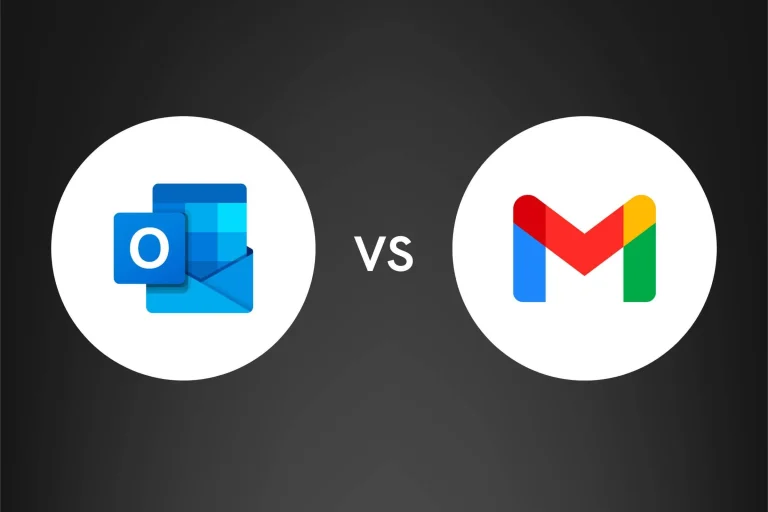What do you do when looking for a product or service and you come across an ad for it in your social media feed, only to forget about it moments later? Most likely, you’ve been retargeted. Retargeting ads are arguably the most effective way to reach potential customers –– yet, many marketers have no idea what it is or how it works. In this blog post, we will dive into the world of retargeting ads and explain how they can be used to build brand awareness and generate leads.
What is retargeting?
Retargeting ads are a type of online advertising that allows businesses to keep their name in front of bounced traffic after they leave a website. This is done by placing a cookie on the visitor’s web browser, which allows the business to show ads to that person as they browse other websites. Retargeting ads are an effective way to stay top-of-mind with leads and can be used to increase brand awareness or drive conversions.
How Retargeting Campaigns Work
When a business runs a retargeting campaign, it places a piece of code on its website (a pixel). The code is unnoticeable to website visitors and anonymously follows them as they browse the web.
When the person visits another website that is in the advertising network of the business running the retargeting campaign, ads from that business are served to them. These ads are designed to look like regular ads, but they’re actually hand-picked for the individual based on their previous interactions with the business.
For example, if you’ve ever visited an online store and then noticed ads for that store following you around the internet, you’ve been retargeted.
Retargeting campaigns can be extremely effective because they’re tailored to people who have already shown an interest in what a business offers. They’re also relatively inexpensive to run and easy to set up.
Pixel-Based Retargeting
One of the most common types of retargeting is pixel-based retargeting. This involves placing a code on your website (called a pixel) that drops an anonymous browser cookie on visitors as they browse. Then, when those same visitors show up on sites within the retargeting network (such as Facebook, Google, or Bing), they’ll be served ads based on their previous interactions with your site.
Pixel-based retargeting can be very effective because it allows you to reach people who are already familiar with your brand and have shown an interest in what you have to offer. And since you’re only targeting people who have already visited your site, you can be sure that your ads are relevant and likely to result in conversions.
The downside of pixel-based retargeting is that it can sometimes feel invasive, especially if people see the same ad multiple times. If done poorly, it can come across as pushy and sales-y, which can turn people off from your brand.
That’s why it’s important to ensure that your pixel-based retargeting campaigns are well-targeted and well-executed. When done right, they can be a powerful tool for driving conversions and boosting sales.
List-Based Retargeting
List-based retargeting is a type of retargeting that allows you to target ads to people who have been on your email list or who have visited your website. This type of retargeting can be very effective because it allows you to reach people who are already interested in your offer.
There are a few different ways that you can go about list-based retargeting. One way is to use a tool like Google Analytics to create a segment of people who have visited your site in the past 30 days. Then, you can target these people with ads on Google AdWords or another platform.
Another way to do list-based retargeting is to upload your email list into a tool like Facebook Ads. This will allow you to show ads to people who are on your list but haven’t visited your site recently.
Both of these methods can be effective, so it’s important to experiment and see what works best for your business.
Retargeting Ad Goals
The main goal of retargeting ads is to bring customers back to your website or online store who have previously shown interest in your products or services. By appearing as a targeted ad on websites they frequently visit, you can remind them of your brand and increase the chances that they’ll return to your site to make a purchase.
Other goals of retargeting ads may include:
- Increasing brand awareness among potential customers
- Generating leads from people who have visited your site but haven’t converted into customers yet
- Encouraging customers who have already purchased from you to come back and buy again
- Building loyalty and repeat business from existing customers
The benefits of retargeting ads
Retargeting ads are a form of online advertising that allows businesses to keep their brand in front of bounced traffic after they leave a website.
Bounced traffic is when a user visits your site and then leaves without taking any action.
This can happen for various reasons, such as not finding what they’re looking for, losing interest, or getting distracted.
But just because they left doesn’t mean they’re not interested in what you have to offer. In fact, according to Google, 98% of users don’t convert on their first visit to a website.
Retargeting ads allow you to reach those users who didn’t convert and bring them back to your site so that you can close the sale.
Here are some benefits of retargeting ads:
1. Retargeting ads are effective. For example, a study by AdRoll showed that retargeted ads resulted in a 10 times higher click-through rate than regular display ads.
2. Retargeting ads are efficient. You only pay when someone clicks on your ad, so you know your ad spend is going towards people interested in your offer.
3. Retargeting ads are flexible. You can show different ads to different audience segments based on their interactions with your website. For example, you can show people who visited your pricing page but didn’t purchase.
The best retargeting platforms
There are many retargeting platforms, but which is the best? Here is a look at some of the most popular retargeting platforms and what they have to offer:
- Google Ads: Google Ads is one of the most popular retargeting platforms. It offers a variety of features and options, making it a good choice for businesses of all sizes.
- Facebook Ads: Facebook Ads are another popular option for retargeting. It offers a wide range of targeting options and can be customised to fit your business’s needs.
- LinkedIn Ads: LinkedIn Ads is a great option for B2B companies. It offers detailed targeting options and allows you to target specific job titles or industries.
What is Facebook retargeting?
Facebook retargeting is a powerful marketing tool that allows businesses to reach people who have already shown an interest in their products or services. Facebook retargeting ads are served to users based on their past interactions with the business, such as visiting their website or engaging with their content. These ads are highly personalised and often more effective than traditional advertising methods.
Retargeting ads on Facebook can be used to achieve a variety of marketing objectives, such as increasing brand awareness, driving traffic to your website, or boosting sales. When used effectively, Facebook retargeting can be a powerful tool for growing your business.
How to create a retargeting campaign
Regarding online advertising, retargeting is one of the most effective tools in a marketer’s toolbox. Retargeting allows you to show ads to people who have already visited your website or taken some desired action, such as signing up for a newsletter or adding an item to their shopping cart.
Retargeting is a powerful way to keep your brand top of mind with people who are already interested in what you have to offer, and it can be an extremely effective tool for driving conversions. This article will give you an overview of how retargeting works and how you can create a retargeting campaign that will deliver results.
When you create a retargeting campaign, the first thing you need to do is identify your audience. For example, you can use demographic information like age, location, and gender to narrow down your target audience. Once you’ve identified your audience, you need to decide what message you want to send them.
Your ad should be relevant to the products or services they were interested in on your site and include a call to action that encourages them to take the next step. For example, if someone was interested in purchasing a new pair of shoes from your site but didn’t complete the purchase, your ad could say, “Get 10% off your purchase when you come back and finish buying those shoes!”.
Retargeting vs Remarketing
There is a lot of confusion surrounding the terms retargeting and remarketing, and for a good reason. They are similar concepts with some key differences. For example, retargeting and remarketing are forms of online advertising that allow businesses to target ads to users who have already visited their website or shown interest in their product or service.
Retargeting is a more narrowly focused form of online advertising that allows businesses to show ads to users who have already visited their websites. This can be done through cookies, tracking user behaviour, or matching email addresses from customer lists. Retargeting allows businesses to specifically target ads to people who are already familiar with their brand, which can increase the likelihood of conversion.
On the other hand, remarketing is a broader form of online advertising that can include retargeting and other strategies. In addition to targeting ads to users who have already visited your website, remarketing can also include targeting ads to users who have shown interest in your product or service but have not yet made a purchase. This can be done through display advertising or keywords to reach people searching for similar products or services online.
While both retargeting and remarketing can be effective ways to reach potential customers, there are some key differences between the two approaches. Retargeting is more narrowly focused on people who have already visited your website, while remarketing includes targeting people who may not be familiar with your brand but have shown interest in
Conclusion
Retargeting ads are effective for businesses looking to boost their online presence. By utilising retargeting ads, businesses can create a personalised experience for users and ensure they stay engaged with their websites. With the right targeting strategy, businesses can increase conversions and ensure that their ad campaigns are cost-effective. Retargeting ads may seem complex at first, but with a little research, it is possible to effectively utilise this powerful marketing tool to maximise your ROI and build brand awareness.















